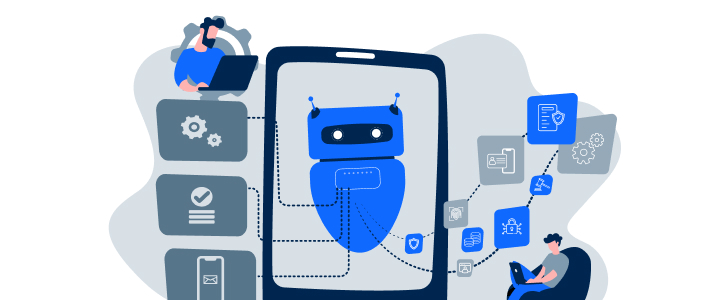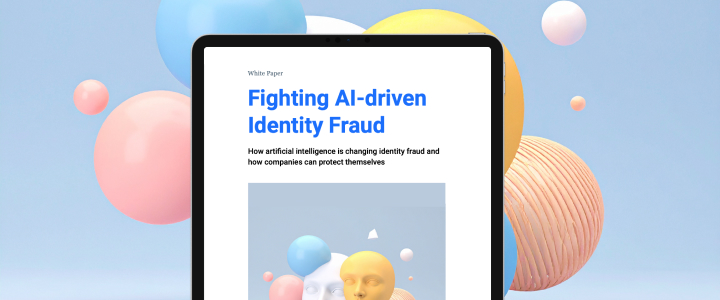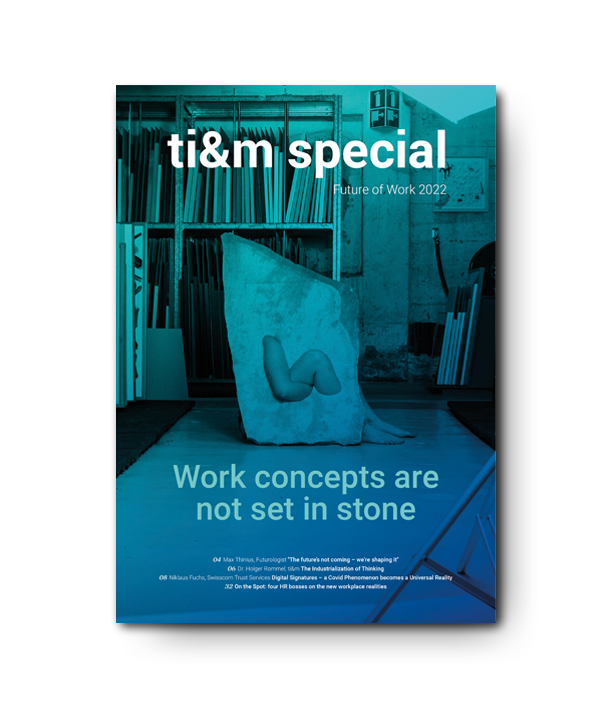Rethinking consulting solutions in banking
Consulting solutions as a service // Low margins and growing competition are putting Swiss banks under increasing pressure. But there’s also an opportunity to gain new customers and retain existing ones by investing in consulting quality. In hot demand are digitally automated consultancy tools that keep banks’ costs low and give customer service advisers the chance to offer their clients the best possible service.
Banks are facing mounting challenges. For one thing, competition is ramping up, because more and more players are pushing onto a market that was for a long time the sole preserve of the banks. Fintechs and insurance firms are offering new(er) and (more) modern products and services, and are scooping increasing market shares from established banks. And last but not least, there are new platforms emerging that are pushing the customer value creation chain into the spotlight and pooling various offerings from third parties, including banks, so that they can offer their customers the right service at the right time. Banks will continue to play a role on these emerging platforms – but more as suppliers than as the main port of call for all financial needs. The period of negative interest seems to be over in the medium term, but interest rate business will remain tense. On the property market, banks have profited from growing volumes over the last few years. If the mortgage market stagnates or mortgage margins remain low, tougher competition will make itself felt.
The pressure of more than 30 years of falling margins will be shifted to the cost side, and will need to be compensated for with increasing automation. Especially in bulk business, there is a great deal of potential in more efficient, or in other words digitalized, processes. Certainly, this automation requires investments that bring the structural problem of Swiss banks to light: the small market. The unit costs of a Swiss bank will always be higher than those of foreign providers. Urgently needed investments in automation are therefore harder for Swiss retail banks to recoup than for large banks or major fintechs like Revolut or Klarna.
And what about the customers?
According to our 2021 Banking Trend Study, around 20 percent of customers already now want to deal with their banks on an exclusively digital basis, and the majority would like to see hybrid processes. What is most important to them, however, is that their query or concern be dealt with as quickly and straightforwardly as possible. Furthermore, the younger generation in particular doesn’t really have much loyalty to their bank: they switch banks almost as casually as they do their mobile phone subscriptions. In light of this, how does a bank offer its customers a personalized service at every stage of their lives so that it remains a lifelong companion every step of the way?
The variety of new investment apps has triggered a minor trading frenzy, and, thanks to the many self-service offers out there, bank customers can make use of the respective services without personally interacting with their bank. Any customer can, of course, search the internet for information about suitable investment strategies or interest rate forecasts. Banking as a service must therefore offer customers a comprehensive service and save them the trouble of trawling the net by providing them with the information they need at a specific point in time. That way, banks can reduce search costs for their customers.
Swiss retail banks still view themselves as universal banks, whose mission is to cover the entire value creation chain from sales to products through to processing. Handling and products are increasingly being standardized and are therefore interchangeable. What is still a USP, however, is the sales interface: Comprehensive customer service and competent advice will thus take center stage, becoming the crucial factor in differentiating one Swiss retail bank from the rest. The challenge: Good consulting is expensive and resource-intensive, particularly when you view yourself as a universal bank and want to provide your customers with top advice in all areas.
The vision from the ti&m garage: high tech and high touch
This is where a technology service provider like ti&m comes into play. Our vision is a consulting solution for customer advisers that maps out the entire customer journey and supplies advisers with all the information in real time in a clear interface. The consulting process is only standardized as far as it is interchangeable – i.e. in preparation and follow-up. Particularly in automated processes, it makes sense in specific circumstances for humans to step in and create added value. It’s important to identify and make use of these touchpoints: high tech plus high touch at the right time. It is left up to customers to decide how and where they want to get advice: Our consulting solution combines self-service elements with hybrid consulting approaches. Once the consultation is complete, the results remain available at all times for both customers and bank employees. If any individual parameters underpinning the consultation change, the customer can make their own changes using the self-service functions. Two examples:
Income situation: If the life situation of a bank customer changes because of a change in income or the birth of a child, they can adjust these details themselves. The change in their pension situation, for example, will be displayed on the system, and they can make their own modifications to their investment strategy.
Mortgage: The customer wants to purchase a property. They can take out a suitable mortgage directly online, or have different variants displayed on the platform before contacting the bank. The bank adviser can pick up the consultation where the customer left off in the self-service process.However, customers don’t always have to take an active role, as the consulting solution alerts bank customers to any major changes. For example, if there are notable movements on the stock exchange, customers will receive various suggestions as to how they can adapt their personal securities portfolio.
At ti&m, we combine banking knowledge with technology; for over 15 years, we have been creating new, innovative solutions for financial service providers. In a garage project, we are working with internal and external experts on developing a consulting solution, based on our tried-and-tested ti&m digital banking suite, that brings together all the relevant banking sectors and different segments on a single platform. The solution will be available to customers as of 2023.
By linking up the different touchpoints and channels and covering different consultation situations (physically in the customer adviser’s office with a screen, at the customer’s home, or online using video call, screensharing and document exchange functions for all end devices), our solution delivers a unique customer experience in a clear and intuitive UX throughout the process. Linking up all the relevant backend systems (for example, core banking system, CRM, portfolio management) will boost automation and thus efficiency. By generating data during the consultation process, the consulting tool also serves as a marketing tool that will help banks appeal to customers with tailor-made offerings. As with all our solutions, we are developing the future platform with an open, modular architecture based on our ti&m channel suite: This is the only way to give banks the freedom they need to design and adapt their processes at short notice.
Outlook
Swiss banks generally offer a very high consulting quality. What they lack, however, is a transparent, overarching process to which all the relevant people have access, which covers the entire customer journey and which enables simple communication via various channels such as chat, video call, email and WhatsApp, as well as the opportunity to exchange documents securely. Consulting solutions, as are currently under development by ti&m, form part of the transformation process and help banks to foster customer loyalty and achieve additional profits on the one hand, and to save on costs through efficient business processing on the other. Standardizing the process allows for a comprehensive quality control, thereby enhancing consulting quality over the long term.







